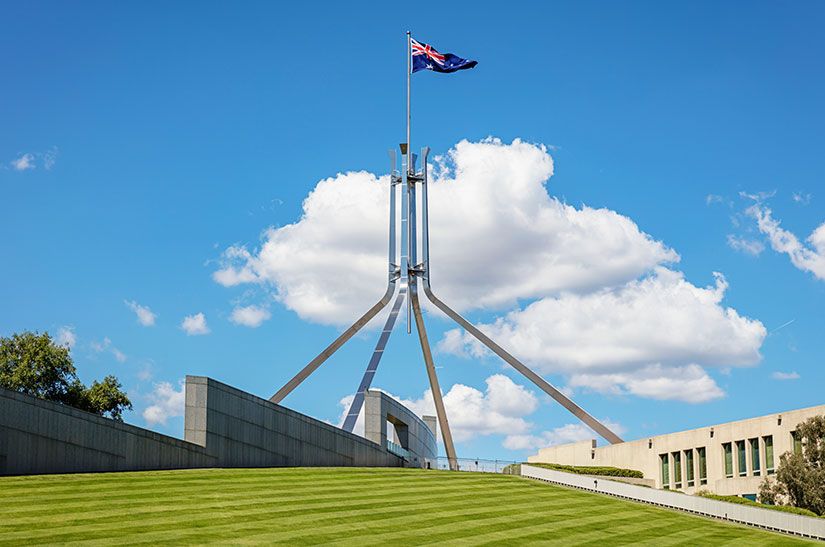
Professor Marek Kowalkiewicz, 14 May, 2021
The federal budget for 2021-22 promises A$1.2 billion over the next six years to support the Digital Economy Strategy, a plan to make Australia “a leading digital economy and society by 2030”.
The Digital Economy Strategy proclaims
We are well placed to be a leading digital economy and have strong foundations, but many countries are investing heavily in their digital futures.
This may sound like a lot, but a closer look at the strategy and funding announcements, compared with what other countries are doing, shows we may not be so well placed after all.
Countries such as France and Singapore have implemented similar initiatives, with one key difference: they are spending about ten times as much money as Australia.
The world picture
To see how Australia compares worldwide, we can look to the most comprehensive global analysis of the digital evolution of nations, the Digital Intelligence Index produced by researchers at Tufts University in the United States.
This index looks at many factors, such as digital payment and logistics infrastructure, internet usage, regulations and research, to give each country scores for the current state of its digital economy and also how fast the digital economy is developing.
In the 2020 edition, Australia ranked as the 17th digital economy in the world — behind Sweden, Taiwan, New Zealand, and the leading nation, Singapore. In 2017 Australia came 11th, so we are already dropping down the rankings.
Just to maintain our position, we need to improve at least as rapidly as those behind us. Prime Minister Scott Morrison has acknowledged this, noting “we must keep our foot on the digital accelerator to secure our economic recovery from COVID-19”.
However, the Digital Intelligence Index ranks Australia 88th of the 90 countries analysed when it comes to our speed of improvement. The only two countries slower than Australia are Hungary and Nigeria, and there are 87 digital economies developing faster than us.
Since 2017, countries such as Slovenia, Egypt, Greece and Pakistan, which used to grow more slowly, are moving faster, increasing the pressure from the back of the pack.
Denmark and Sweden, two countries ahead of us in the Digital Evolution ranking above, used to grow slower, giving us a chance to overtake them. Not anymore. They have now picked up speed, and are increasing the gap we need to cover even to catch up with them.
The right ideas, but not enough funding
The Digital Economy Strategy package, announced in the budget, covers a broad range of initiatives. They are grouped into eight priorities, covering education, support for small and medium enterprises (SMEs), cyber security, artificial intelligence (AI), drone technologies, data sharing, support of government services, and tax incentives.
It is promising to see government’s dedicated investment, particularly in securing future skills and building Australia’s AI capability. But it is concerning to see the spending on some priorities fails to reflect the importance of these topics.
The federal government recognised the need for upskilling Australians. According to the Australia’s Digital Pulse report compiled by Deloitte and the Australian Computing Society, we will need 60,000 new technology workers every year for the next five years, just to meet the growing demand. Yet only 7,000 students graduated with IT degrees in Australia in 2019.
The new budget will support graduate and cadet programs, including through additional funding assigned to AI. Unfortunately, the government’s new programs will barely put a dent in our projected skills shortage of about 50,000 workers annually. The new programs will provide scholarships for only up to 468 graduates over a six-year period.
Artificial intelligence is another key topic. AI is upturning industries globally, and creating opportunities for emerging and transforming businesses. The federal government allocated $124.2 million to this priority, distributed among initiatives lasting between four and six years.
Compare this with France, which has allocated €1.5 billion (A$2.3 billion) to AI initiatives running between 2018 and 2022. Given France’s economy is roughly twice the size of Australia’s, an equivalent commitment from Australia would be slightly over A$1 billion — almost 10 times the promised A$124.2 million.
Not enough funding for private enterprise
A huge chunk of the $1.2 billion promised in the budget will be spent on the Enhancing Government Services Delivery priority. Aside from two small expenses of $13.2 million, it consists of just two large initiatives.
The first will deliver an enhanced version of the government’s online service platform, myGov. The second is for digital health, funding My Health Record and Australian Digital Health Agency activities. Together, they will consume more than half of the entire Digital Economy Strategy budget.
This seems grossly unbalanced and skewed toward digital transformation of the public sector, rather than supporting Australia’s digital economy holistically.
Are we really keeping our foot on the digital accelerator, or just pretending to?
We need to do better
Australia’s budget spending on the Digital Economy Strategy for 2021-22 is planned to be just shy of $500 million (with the remainder of the announced $1.2 billion to be spent over the following five years). That’s less than 0.1% of Australia’s entire projected budget spending. How does it compare to leading digital economies?
In Singapore (the world’s top digital economy), a single initiative to support organisations in adopting digital solutions and technologies received S$1 billion (A$960 million) in funding this year. That’s just shy of 1% of Singapore’s entire budget in 2021. Again, the commitment is around ten times higher than Australia’s investment.
To stop sliding down the rankings, Australia needs to put its (our) money where its mouth is. Countries ahead of us (Singapore) and behind us (France) are investing ten times as much as we do in digital economy initiatives.
Are we really well placed to be a leading digital economy? Like so much in life, you get what you pay for.
This article is republished from The Conversation under a Creative Commons license. Read the original article.
